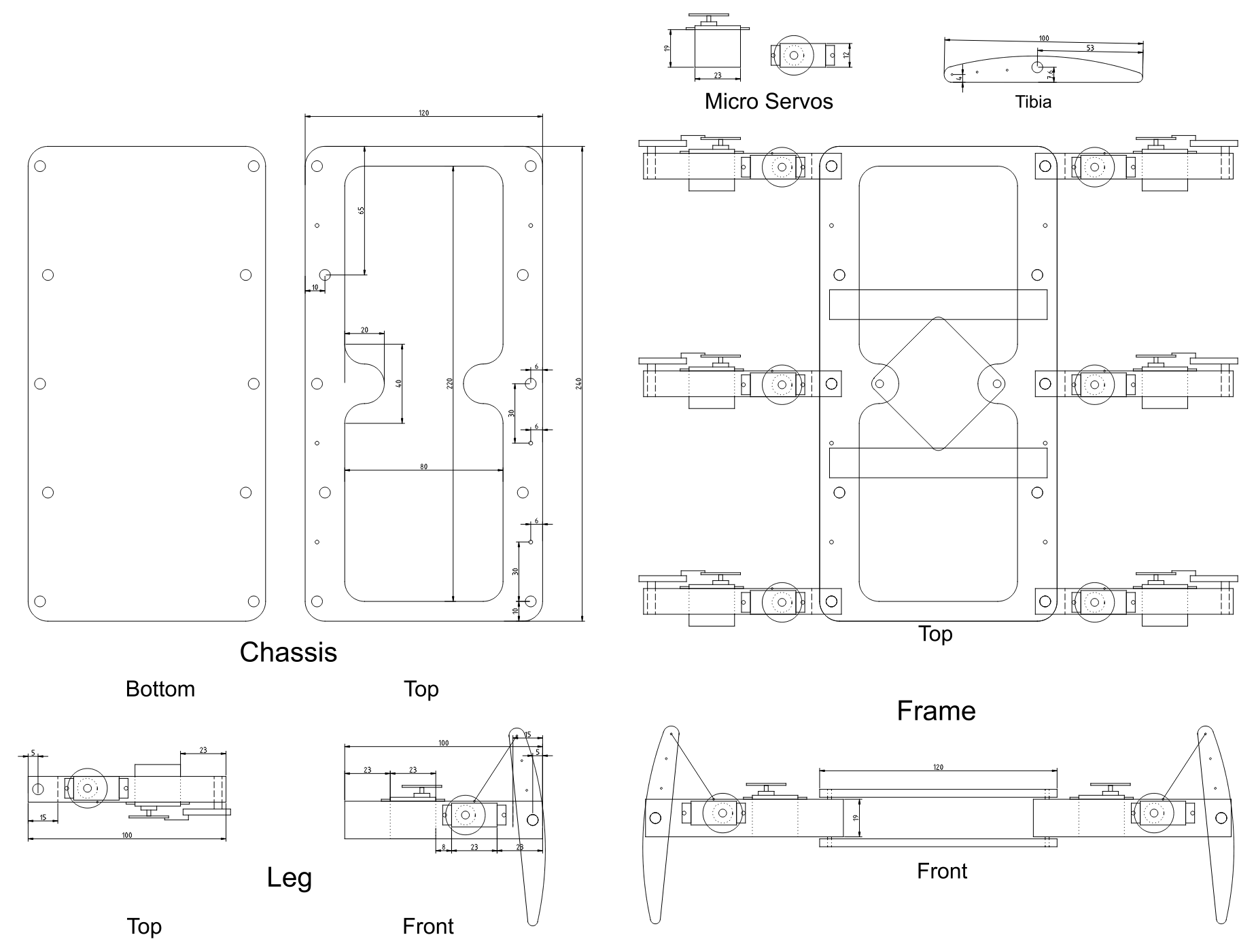To combat vertical sloppiness in the legs, over the weekend we made a few changes to the chassis.
First, we changed the coxa joints from being secured to the chassis and having the femur rotate on the axle, to having the femur secured to the axle, with the axle rotating within the chassis. This makes a difference because a) the two halves of the chassis are further apart from each other, meaning that there is less play in the leg, and b) because I messed up when drilling some of the coxa axle holes in the femurs, and made the holes slightly too large. By securing it this way, there is much less vertical motion (and in fact there is hardly any at all). It also serves to give a more stable platform for potential changes to the leg design, adding another DOF.
Second, we made the chassis itself 60mm longer, spacing the legs further apart. This lets the legs move more without colliding with each other, which should allow for faster movement speed.
Third, since as per #1 the top and bottom halves of the chassis are no longer secured mechanically, we added four holes in the chassis to attach the two halves. This is simply done by using a 1/4" x 2" bolt with three nuts. Stick the bolt through the top half, from the top, and secure a nut tightly against the top half. A second nut is put on the bolt about 1/2" from the end. When the bottom half is attached, a third nut is placed right at the end of the bolt, and the second nut is then tightened securely against the bottom, pushing out against the third.
Finally, we removed the cutout from the bottom portion of the chassis. Weight is not much of an issue anymore, thanks to the mechanical joints, and it makes for a prettier base for the batteries to attach onto.
The updated frame schematics are attached below:

 The Big One
The Big One
Discussions
Become a Hackaday.io Member
Create an account to leave a comment. Already have an account? Log In.